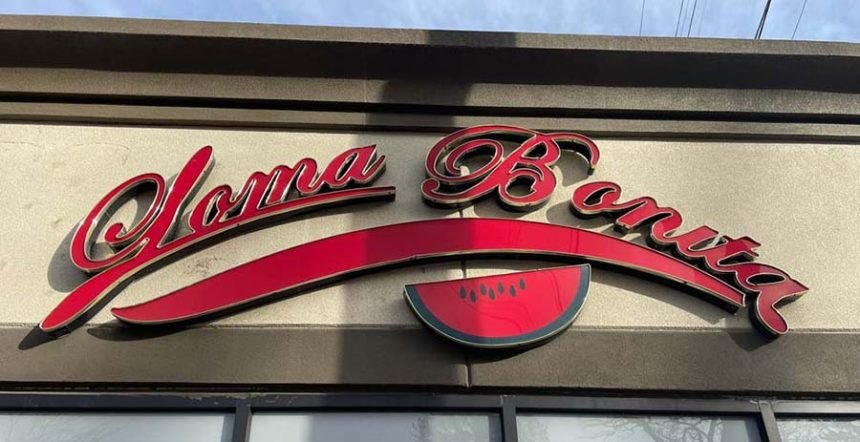The Blueprint
- Loma Bonita Market opens its largest Latino supermarket in Richfield
- 52,400-square-foot store includes a bakery, tortilleria, and taqueria
- Family-owned business expanding from five Minnesota locations
- Aims to serve both Latino and non-Latino shoppers with bilingual design
The 52,400 square foot retail space at 140 W. 66th St. in Richfield had been vacant since 2018, lacking a tenant with big enough plans to match the expansive space. But new tenant Loma Bonita Market planned a Nov. 1 opening as the sixth, and largest, Latino supermarket owned by the Castillo brothers: Porfirio, Fernando, Gregorio and Tomas Castillo.
The brothers already have five Supermercado Loma Bonita locations — four in the Twin Cities metro area and one in Monticello. They aren’t newcomers to the retail business. The family came to Minnesota from California about 35 years ago, according to Porfirio Castillo. They opened their first store in Crystal about 20 years ago, a 900-square foot bakery. Two years later they opened a meat department and then a taqueria, expanding to 11,000 square feet.
Each of their markets features a bakery, taqueria, ice cream shop, meat department, money transfer location and grocery store. The Richfield location will also have a tortilleria and flower shop.
The choice of the name “market” rather than the traditional “mercado” is intentional. It could be considered part of the formula for this type of retail success: “crossing over” to attract not only Hispanics, but everyone else who shops, according to Luis Fitch, co-founder of Uno Branding, a Minneapolis marketing agency that develops and implements cross-cultural initiatives, most frequently for Latino and other multicultural audiences.
“Since Rainbow left Richfield, it doesn’t matter what ethnicity, they need a store,” said Fitch, who is not affiliated with the Castillos. “The Castillos understand the need to provide a cross-cultural market. To survive they need to reach everyone, not only Latinos.”
“It’s extremely important to carry out that branding and communications strategy both in Spanish and English.” Richfield is about 19% Latino according to U.S. census data.
The Castillos have a 10-year lease on the former Rainbow store, landlord Brixmor Property Group told the city’s planning commission in August.
It will be about five times the size of Loma Bonita’s existing stores in Savage, St. Paul, Crystal, Hilltop, and Monticello, and the largest Hispanic market in the Twin Cities. The store will have a meat department, bakery and a “restaurant element,” said Brixmor project director Lauren Robinson. She told the commission that it will be “unlike anything else.” She told the planning commission that remodeling the space would cost $4.2 million
“All of their locations seem to be doing extremely well,” Fitch said. “They’re moving fast, and it seems like they’re doing it right.”
Generally, the fundamentals for making a Hispanic market a success are similar to general retail marketing principles, Fitch said.
“It comes down to budget, the demographics of the area, he said, “who’s behind it, and having a clear understanding of the neighborhood. I hope they have done a study of what the majority of people need in the area. There is a lot of crossover; Americans love Mexican food; it’s probably the number one ethnic food consumed in America.”
“In my experience, what is really important in retailing is the way you merchandise,” Fitch said, using the example of yogurt. “If I’m white, it’s important that a store has the American brands.” Mexican and American brands need to be in close proximity on the shelves, Fitch said. A lot of stores separate them, which makes it harder to shop them. Putting the Latinx and American brands together, the majority of shoppers can understand the section is still yogurt.”
Regarding store design, “the visual is very important,” he said. “You need graphics and murals with colors that represent the culture in a positive way, not stereotypical. All signs should be bilingual.”
He said stores should also be designed to make non-Hispanic customers feel comfortable. English signage is important to help non-Hispanic customers feel at-home, “like going to Cancun or Puerto Vallarta,” Fitch said
“More important, is, do they explain things?” to non-Hispanics. “Like, how we use cilantro [for example] which is not part of this [U.S.] culture. And there are 50 different variations of chilies, 20 kinds of salsa, so it’s important to explain how we use them in our culture.”
Their other locations have what makes a really good supermarket for Latinos — fresh fruit and vegetables, all the basics for mom to buy … and a butcher shop, with employees who understand all the [Mexican] cuts of meat.”
The Richfield tortilleria should be a big draw, Fitch said. “Tortillas are like ‘white bread for Mexicans.’ Making them fresh daily provides incredible added value. People will smell the bakery as soon as they walk in.”
The store will have a deli counter selling pre-made meal items, which is important with more families with two parents working outside the home, Fitch said. Increasingly, “Mom is not staying home.”
Also important is providing check cashing and wire transfer for “sending money home,” Fitch said. “Also, having some sort of pharmacy. Any service to help recent immigrants is good. What happens with these types of large stores is that they become a hub for the community.”
“It’s not enough to say ‘We’re the biggest Mexican store’ if your prices are expensive or you don’t have fresh vegetables and other foods; you need to stand for something.”











